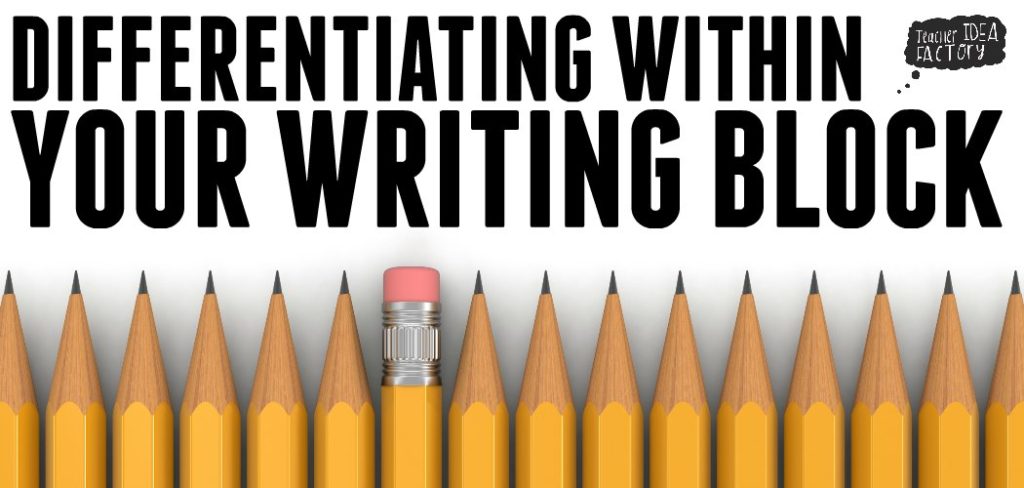There’s that word again. DIFFERENTIATION. As trained educators, we know this way of teaching is the key to success for all. However, creating levelized lessons is no easy task. This is especially difficult when it comes to writing. Oodles of academic levels walk into your door each day. Reaching ALL of them while in the writing block takes careful planning and hours of prep. I’m here to toss out a few ideas that have really worked for me in the primary grades over the years. Let’s see if we can’t help streamline the differentiation process for you too.
THE OLD SWITCHEROO
When hosting a direct writing lesson, pull the old switcheroo before you begin. Move those kids who need a little more support to one table group or cluster of seats in your room. This helps you in three key ways. First, you know exactly where to head once you finish the lesson. This helps ensure that no one gets overlooked when you’re cruising the room and offering support. Next, those writing rock stars out there are NOT distracted by those who are having trouble. Finally, those kids on the fence are surrounded by kids who ARE writing . . . and writing hard. A little modeling from your top students NEVER hurts.
Sure, changing seats can be a bit of a distraction the first few times, but once you have ’em trained, it’s just another writing block. Now, when you are having “one of those years” and transitions are tough, switch out a few different calming techniques. Put on soothing music (no words) as they move seats. Rock out a brain break right before you move into the block to help get that extra energy out. OR . . . add something novel, quiet, and chill to the transitioning process (i.e. hold the “bubble” in your mouth, tip-toe, slow motion, etc.). You may even need to up the ante and create a line up and excuse routine. That “ONE” year in my classroom, I even resorted to the tactic shown below and it actually worked for a while . . .
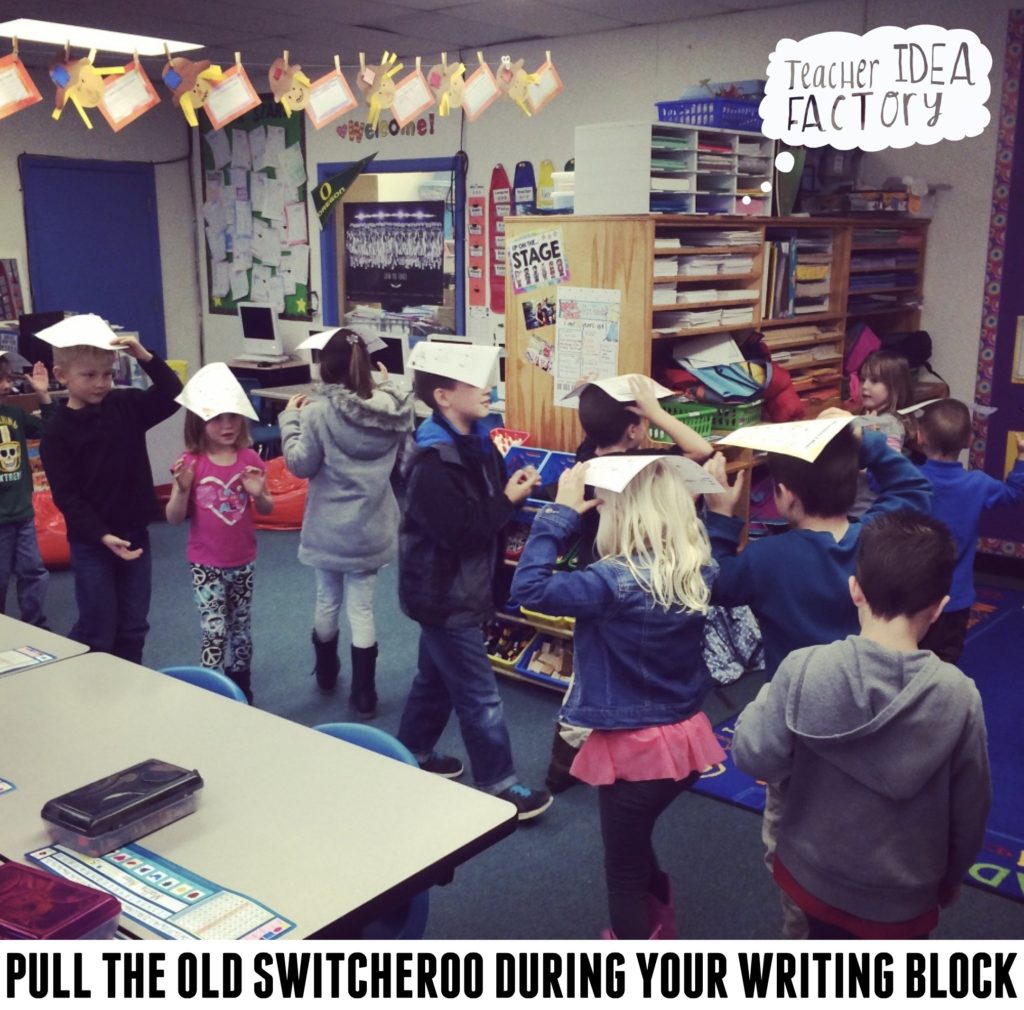
It sounds like a lot, but I promise clustering is worth at least a try a time or two. Why not give it a go and see if switchin’ it up works for you? Who knows . . . maybe it will be just the trick you were looking for??!!
CREATE A BASE CAMP
If you are lucky enough to have a mommy helper or teaching assistant during your writing block, I suggest creating a base camp for a small group of students. By base camp, I am referring to a table that allows for solid teacher-student interaction. As teachers, we can handle cruising around the room, while still monitoring EVERY LITTLE THING that is going on. This is often overwhelming for a parent or assistant . . . hence . . . a separate table group.
Depending on the “hand” you were dealt, this could look a bit different from year to year. I typically like to take my Tier 3, non-workers, and hot shots (these kids are the ones that moved seats out in the general classroom area during the switcheroo). This leaves my Tier 2 kids (those that just need a little more encouragement, but are capable) sitting with another adult. We are usually talking anywhere from 5-6 kids. Now, if you have a super-low group, I suggest modifying this a bit more. Hand pick ONLY 3-4 kids to send to the base camp (students that you know will benefit most from the extra small setting). That leaves you with the majority of the group, but hey . . . this is nothin’ new.
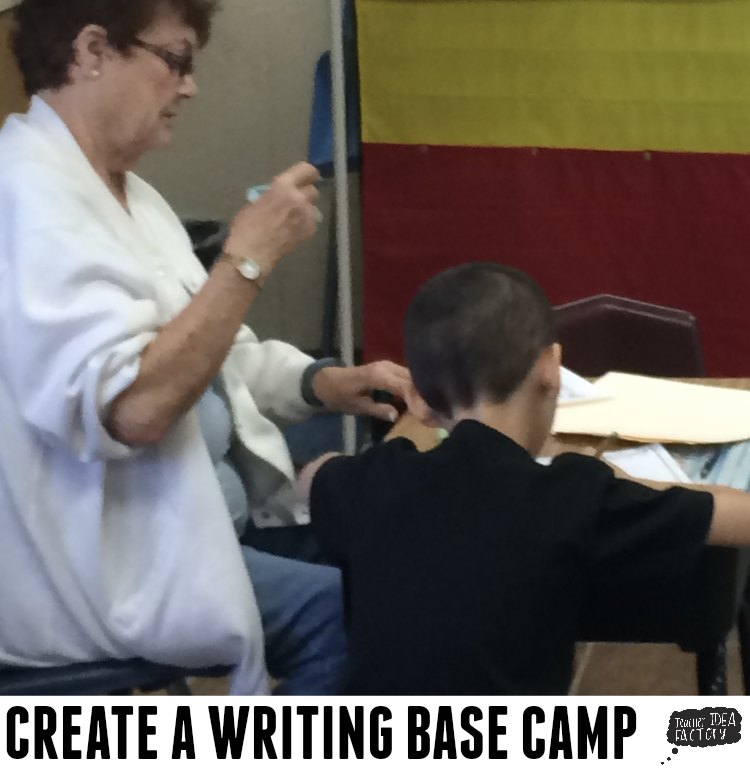 DUEL MONITORS
DUEL MONITORS
I finally figured this one out after about 8 years in the classroom. DUH! If you’re already on it, good for you!!! If not, let me help you have a little aha moment. If you are runnin’ with a sentence starter or prompts, write out the two differentiated ditties in separate areas. OMGOSH, people! I have always had a built-in writing station during reading group time. When “that particular group” would hit the writing station, I would jump up from the group in front of me and fix the prompt on the board before they got going. Not only did this jack up two groups, but it also meant oodles of lost instructional time. I finally wised up and had BOTH prompts/starters ready to go before groups even began. Um . . . hello??!!

The easiest way to do this is to write the levelized sentence starters or prompts on different sides of the white board. I also liked to use different colors to help kids instinctively sort out which one they were to utilize. I suggest assigning your groups the SAME COLOR every week. If you have a class that still struggles with this (I have had one . . . sigh), put one prompt on the white board and one in an entirely different place. For example, one year I wrote one on the board and projected another one on the TV via a doc camera (this was on the back wall of my room). If your doc camera doesn’t provide a different enough space, use a rolling chart stand or white board and post it or wheel it to the back or side of your classroom. This ensures that your kids won’t have another prompt in sight to confuse ’em.
PERFECTING THE PROMPT
As I stated above, I slipped writing into the mix on a daily basis OUTSIDE of the writing block. However, differentiating this center was something that needed to be quick and efficient for me, while being super effective for students. ((GULP . . . that’s quite a task.)) Over the years, I grew tired of running around with a highlighter to write out things for my low babes to trace. I also became frustrated when my top kiddos would run out of room on the at-grade level template as they would either cut their writing short or sloppily finish it on the back of the page. Therefore, I began to create levelized templates for each daily prompt. It sounds like a lot of work, but it really isn’t. Once you get the first writing template made (border, graphics, title, name line), altering the “level” only takes a few more minutes.
I’m not explaining this very well, so let me show you . . .
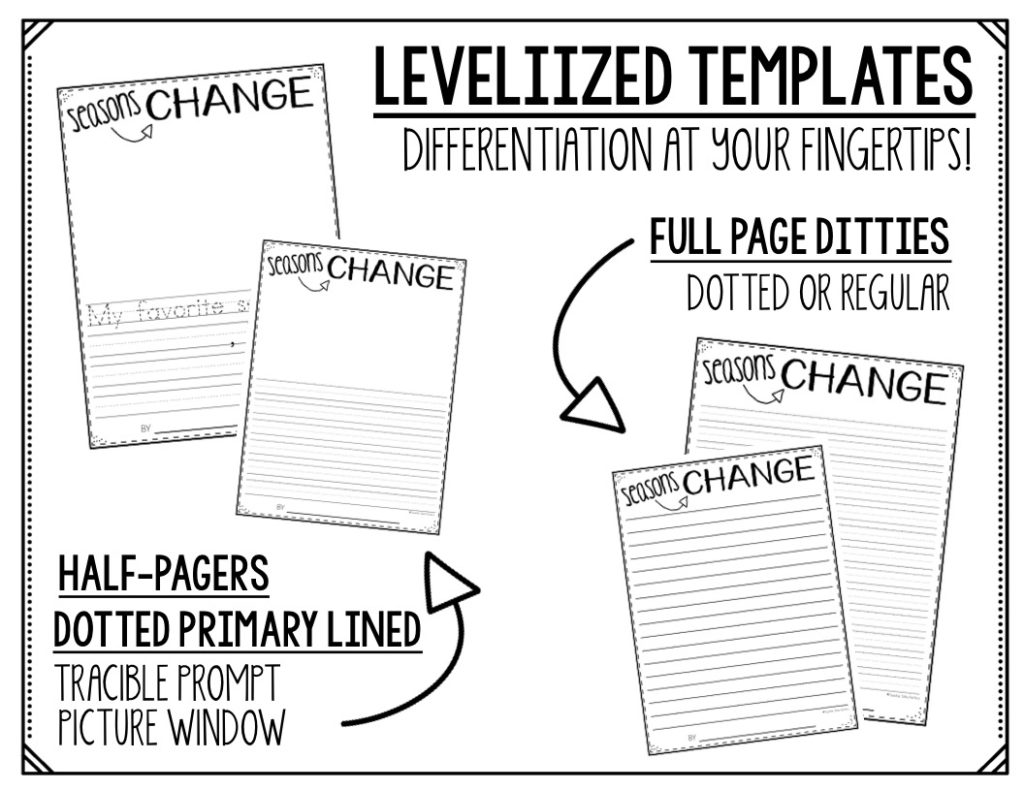
Teachers Pay teachers offers oodles of lined fonts and cute frames/graphics that enable you to make writing templates pretty easily. If you would like to take advantage of a pre-made set, I have packaged my favorite writes into a WRITING IN A PINCH COLLECTION. Each section of these packets (broken down by months) contains 9-12 ready-made writing ideas as well as some BONUS writes. This equates to more than 40 grab-n-go writing ideas to carry you through a trimester. In addition to the templates, I included possible prompts for each topic. They were left open-ended enough to inject your own, but I wanted to offer up some no-brainer options if something comes up while trying to plan or write out the daily prompt (those overly chatty parents during that precious pre-bell prep come to mind . . . hehehehehehe).
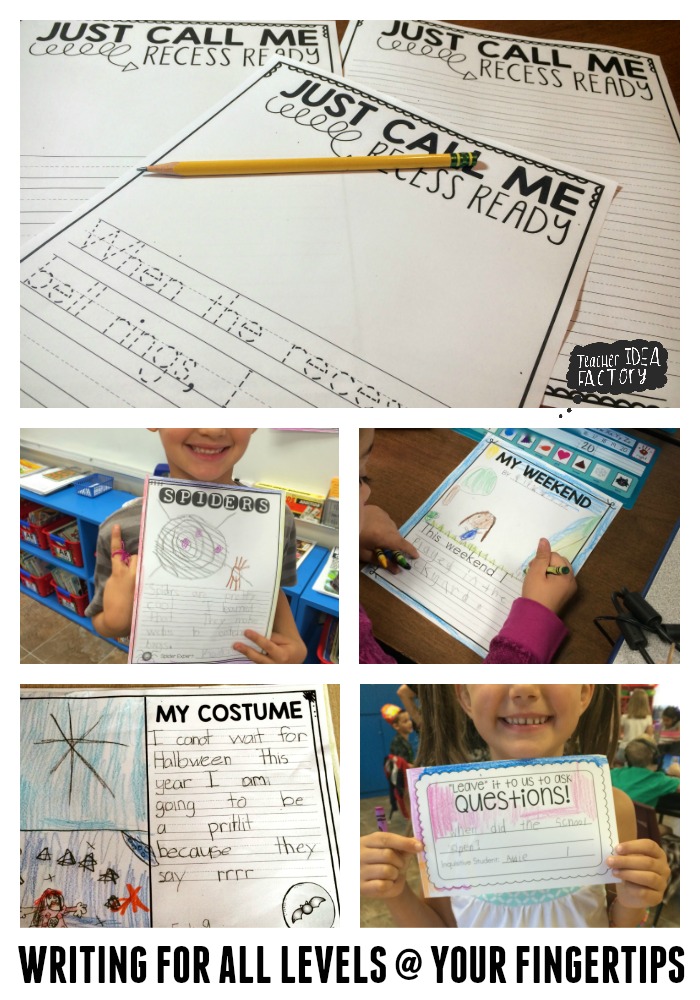
My goal was to provide differentiated templates centered around a topic in an effort to EASILY fit your students’ academic needs. Within each topic section, you can easily support everyone in your classroom without drawing attention to those kids who need way more support than others. These templates range from dotted topic tracer sheets that help scaffold and support your low babes to fully-lined “write your heart out” sheets for your hot shots. CLICK HERE TO CHECK OUT MY FALL COLLECTION. A free sample is up for grabs in the preview.
Alright, so there you have it. A handful of ideas to help make the differentiation of your writing block slick and pretty painless. If you are looking of more writing resources, check out some of my ideas HERE. Thanks so much for taking the time to stop by to see me. I’ll be back soon with a little somethin’ – somethin’ . . . <3
